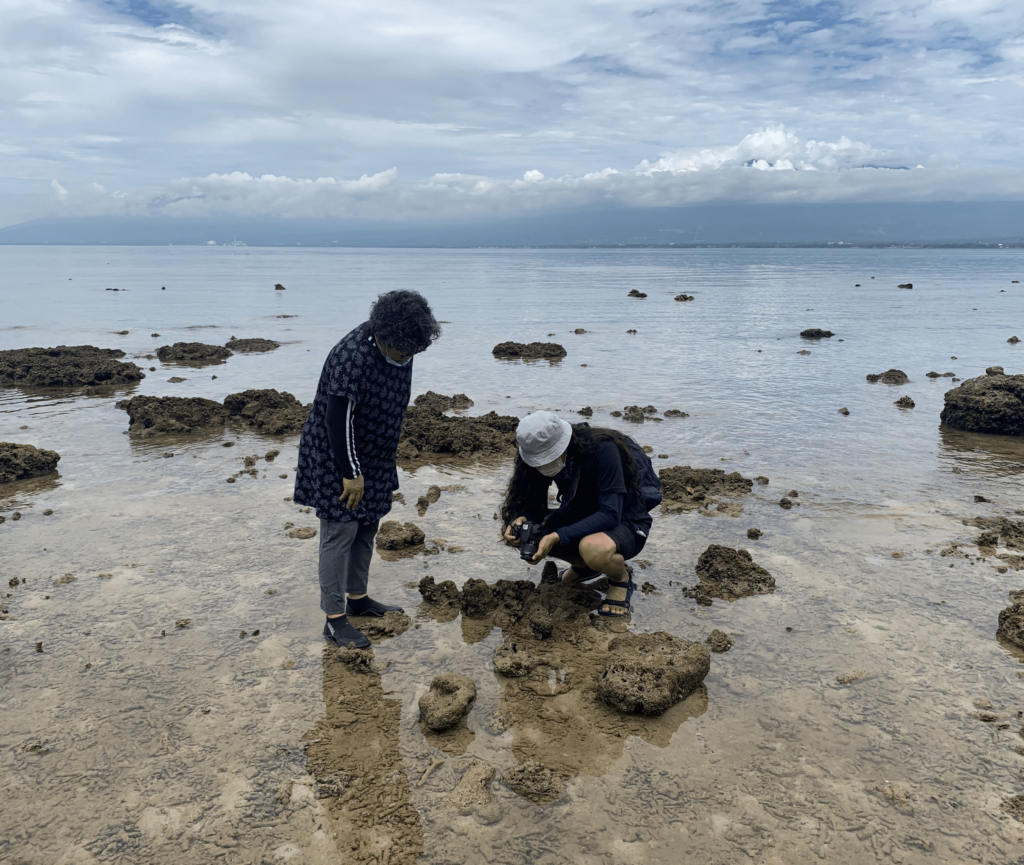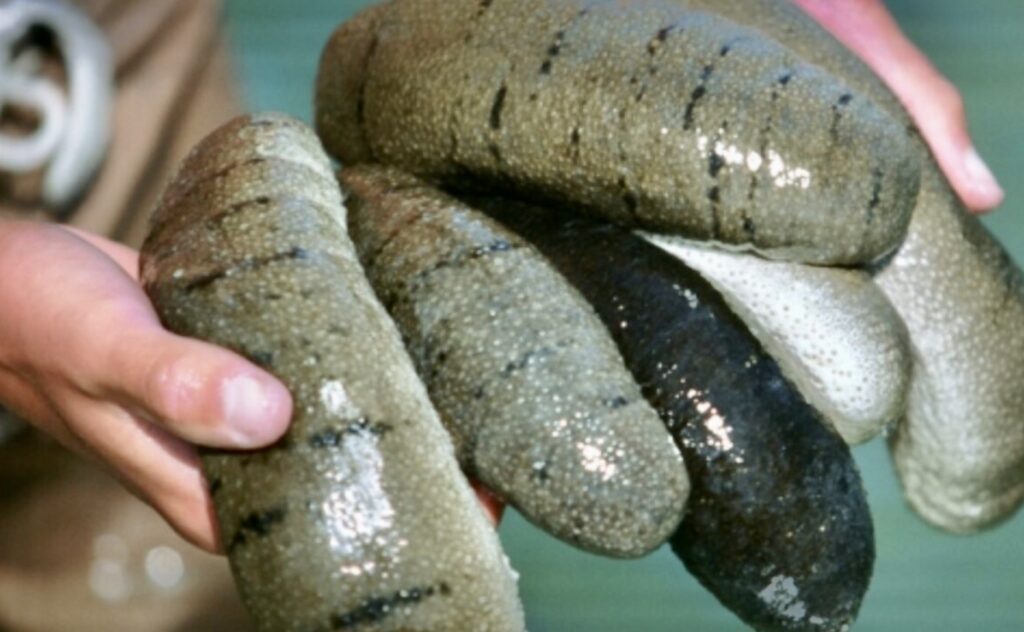Text by Henrylito D. Tacio
Photos courtesy of Davao Light, BFAR, and Shutterstock
An endangered sea cucumber – called “puti-an” and commonly known in English as sandfish – has been discovered at the beach area of Aboitiz Cleanergy Park in Sitio Punta Dumalag in Matina Aplaya, said a report disseminated by Davao Light.
Researchers from the University of the Philippines-Mindanao (UP-Min) unearthed the existence of “puti-an” when they conducted a rapid scanning in the beach area in September last year.
Dr. Ruth Gamboa, the lead researcher, cannot confirm, however, if the “puti-an” has existed in the area before. Back in 2015, the team also conducted a rapid scanning of the beach and the nearshore reef, and they never encountered “puti-an” inside the observation transects.
“We are happy about the findings of the rapid scanning conducted by UP Mindanao in the park. It inspired us to continue our conservation efforts, not only for the endangered Hawksbill Sea turtles, but for the other marine species that consider the park a safe haven,” said Rodger Velasco, president, and chief operating officer of Davao Light, an AboitizPower subsidiary.

Known in the science world as Holothuria scabra, “puti-an” is also known as garlic bread sea cucumber as its upperside has wrinkles and sometimes black bars, thus resembling garlic. It is classified as endangered species on the International Union for Conservation of Nature (IUCN) Red List because “its population face a high risk of extinction in the wild.”
“To be classified by the IUCN as ‘endangered’ means that ‘puti-an’ fishery monitoring and regulations should be in place to prevent the species from being critically endangered or worse, extinct,” Dr. Gamboa said.
There are some 1,250 known species of sea cucumbers that are related to starfish and sea urchins. The Philippines is home to 200 species, and “puti-an” is one of the 40 species that are commercially important.
Aside from “puti-an,” the UP-Min researchers also found another species called Stichopus horrens or “hanginan.” This reef species is called durian sea cucumber in English as its large soft conical thorn-shaped structure resembles that of the skin of the durian fruit.
“Hanginan” is classified as a vulnerable species, meaning its population is in a continuing decline, and its rate of reproduction cannot catch up with the rate of harvest. “In time, there is a possibility that those species will also be endangered,” Dr. Gamboa said.
The discovery of the sea cucumbers is being hailed by the management of the Cleanergy Park, an eight-hectare ecological preserve and biodiversity conservation site. The park is a sanctuary for endangered marine turtles and over 100 bird species, including 12 birds which are endemic in the country.
Sea cucumbers – called so because they look like their vegetable counterparts – are among the most commercially-exploited aquatic species in the country for their reported medical, pharmaceutical, gastronomical, and commercial use.
For centuries, sea cucumbers have long been a staple in diets, mainly in soups, stews, and stir-fries. They are highly nutritious, described as “tonic food,” and provide more protein and less fat than most foods. Most are processed and sold as “trepang,” which is easier to store and handle than fresh product.
Anecdotal accounts from the 18th century hold that the daily harvest of sea cucumbers from Philippine waters could be measured in sacks. “Commercial exploitation of sea cucumbers dates back to the late eighteenth century,” pointed out Poh-Sze Choo of the WorldFish Center. “Almost all of the sea cucumbers harvested are processed into the dried form and exported predominantly.”
“There are no restrictions on the export of any species of sea cucumbers even though some species have reached endangered status, nor is there a size restriction on any sea cucumber species for export,” wrote Ph-Sze in his paper, “The Philippines: A hotspot of sea cucumber fisheries in Asia.”
The UN Food and Agriculture Organization (FAO) reported the Philippines has been a major exporter of the processed “trepang” for the last several centuries. In 1993, the Philippines was the second major producer and exporter of dried sea cucumber in the world.
In Palawan, sea cucumber processing involves four major steps: cleaning, cooking, smoke drying, and sun drying. “The duration of each process depends on the species and the size of the specimens,” wrote Sabine Schoppe of the State Polytechnic College of Palawan.
Filipino fishermen reportedly harvest all the sea cucumbers they could find due to the high income from it. Depending on the quality of drying and the species, a kilo of dried sea cucumbers can fetch between P3,000 and P8,000.
The high price and demand for sea cucumbers in the world market fueled the massive exploitation of these resources in the country. As Naga, the publication of the WorldFish Center reported in 1987: “The steady demand for sea cucumbers from other countries has made sea cucumber harvesting an attractive source of income for many Filipinos. In many islands and coastal villages, the income derived from it constitutes a significant portion of a family’s livelihood.”
From its heyday of being the world’s second producer, the Philippines dropped to the eighth slot in 2015.
“Yes, we used to have a lot of sea cucumbers in our coastal areas,” admits Dr. Rafael D. Guerrero III, a fishery expert and academician at the National Academy of Science and Technology. “They have been depleted because of over-harvesting.”
All is not in vain, though. The Philippine Council for Agriculture, Aquatic and Natural Resources Research and Development (PCAARRD) has come up with a national program on sea cucumber that would restore the fishery and bring back a viable economic activity.

“The program aims to establish a sustainable and globally competitive sea cucumber industry, which provides equitable economic benefits to various stakeholders and maintain the productivity and biodiversity of the sea cucumber fishery in the country,” said PCAARRD, a line agency of the Department of Science and Technology (DOST).
Aside from those mentioned earlier, sea cucumbers are also important in the ecosystem where they thrive as they are capable of bioturbation or turbulence. “They churn up the seabed when feeding,” animalfunfacts.net states. “To be more precise, they swallow the sand and feed on the algae that live in it. In the end, well ventilated and clean sand comes out ‘at the other end.’”
Sandfish – as they are called sometimes – are good for the marine environment. In fact, they are called the earthworms of the sea as they loosen and improve the soi. More importantly, they enrich the water with important nutrients that help endangered corals grow and ensure that the water is less acidic.

